How to plant garlic correctly in spring?
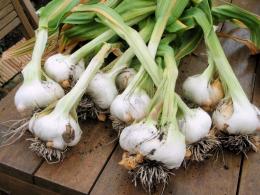
Garlic is a crop that does not require special care after planting. It’s rare that a garden plot is complete without garlic beds. This plant is very popular among gardeners for its unpretentiousness, as well as for its unique pungent taste and mass. useful properties. Gardeners often wonder when to plant garlic: in spring or autumn.
Content:
- When is the best time to plant garlic?
- Preparing for landing and choosing a site
- Soil preparation and formation of beds
- Care after landing
- Harvesting
When is the best time to plant garlic?
Garlic can be planted both in spring and autumn. Autumn plantings produce a rich harvest. The garlic itself turns out very juicy and aromatic. But there is a significant drawback. Autumn garlic has a short shelf life. Even if all storage standards and rules are observed, the heads begin to turn black and rot early. Therefore, experienced gardeners choose spring planting. In this case, the shelf life of garlic increases significantly.
Planting work begins as soon as the snow melts. The soil should warm up to +5 degrees. This is approximately the end of April or the beginning of May.
In this case, the climatic features of the region must also be taken into account. Garlic that is planted in the spring is called spring, while the autumn version is called winter. The difference between spring garlic is not only that it has a longer shelf life. Spring cloves garlic fit closer to each other.Its heads are not very large, unlike winter ones.
The best varieties of spring garlic include:
- Aleysky
- Victorio
- Sochi
- Moscow
- Ershovsky
These varieties do not give the shooter. Gulliver garlic is classified as a shooting variety.
Preparing for landing and choosing a site
Before you start planting, you need to prepare the planting material. To do this, divide the garlic into individual cloves without damaging the skin. They are then placed on a damp towel. The towel is folded and stored in a cool place for several days; you can put it in the refrigerator.
Garlic is a sun-loving plant. It is planted in well-lit areas. Garlic gets along well with crops such as:
- potato
- cucumbers
- onion
- tomatoes
- raspberries
- gooseberry
- currant
- strawberry
The proximity to cabbage and peas is undesirable. These vegetable crops interfere with the growth and development of garlic. The ideal option is a place where melons or legumes were previously grown.
Soil preparation and formation of beds
Garlic is not afraid of the cold. It begins to grow even at air temperatures slightly above zero. Do not delay planting work. Otherwise, the garlic will not have enough time to ripen. If all standards are observed, the harvest can be obtained at the end of August or at the beginning of September.
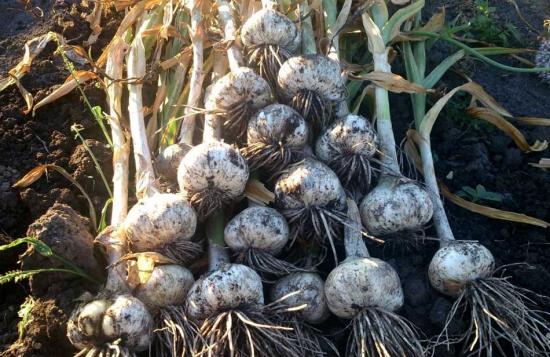
Garlic has a weak root system, so it needs moist soil. Neutral soil is best. If the soil is slightly acidic, it should be diluted with ash. In advance, two weeks before planting, the soil should be fed with humus or compost. The soil needs to be dug up and loosened using a rake.
Garlic is planted in rows. Furrows should not be made deeper than 4 cm.The cloves are planted at a distance of 5 cm from each other. If the variety is large, then this distance can be increased by two to three centimeters. The grooves are sprinkled with earth, lightly slapping it down.
A distance of 40 cm is maintained between the rows. This is done so that the plant can be conveniently weeded and loosened. To protect soil from drying out, it must be mulched using dry pine needles or dry grass.
This procedure is not mandatory, but it will greatly facilitate further care of the plant. Garlic must be planted in moist soil. If there is little rainfall, additional watering will be required. After two weeks, the first shoots should appear.
Care after landing
Spring garlic will require much more attention after planting than winter garlic. Before the first shoots appear, the plant needs to be watered. Watering will be needed for four weeks after planting. After this, garlic is watered only in dry weather.
Video about planting garlic in spring:
To improve productivity, it is recommended to fertilize plants with nitrogenous fertilizers. During the appearance of the first shoots, potassium chloride will be useful. Manure or compost is suitable as a mineral fertilizer. The second feeding is done when the bulbs begin to form. Complex fertilizers will be useful for this period.
And in order to increase productivity, phosphorus and potassium are needed. If a variety that produces arrows is planted, they will need to be removed as soon as they appear. This is done so that nutrients do not go to the development of the frog and are not spent in vain, but go to the formation of the head.
Harvesting
Most of the spring varieties the shooter does not give.Therefore, the level of maturity is determined by the leaves. Garlic can be harvested when its leaves turn yellow and begin to dry out. It is not recommended to pull ripe garlic out of the soil; it should be carefully dug up.
The harvest is harvested in dry weather. After which you need to let it dry thoroughly. To do this, choose a cool, dry place. A shed or attic is ideal. After this procedure, the heads are shaken off the ground, the roots will need to be cut off, and then the crop is placed in boxes, the bottom of which is lined with paper.
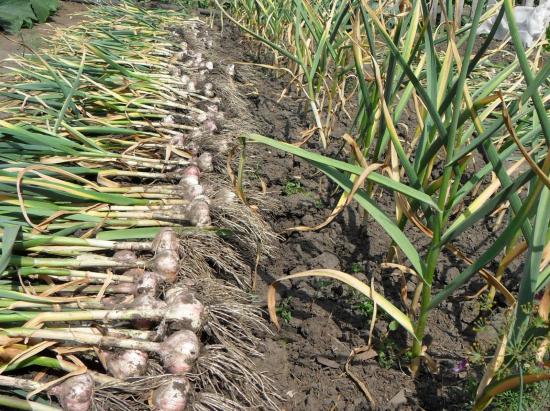
Do not cover the heads in a thick layer. It is important that they have access to fresh air. Spring garlic, subject to all the rules, is able to retain all its valuable qualities throughout the winter.

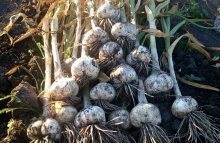
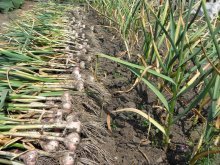

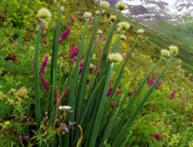
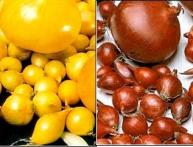
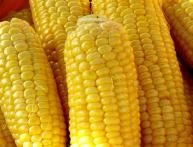

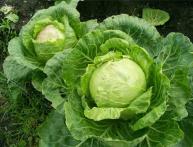
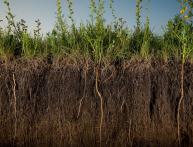
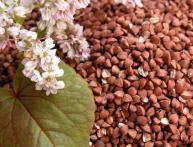
Comments
We always plant garlic before winter, it then grows larger, as for shelf life, of course, it gradually deteriorates, but until next spring, it is still mostly preserved. Garlic planted in the spring is smaller, and even if it does not spoil, it will still be possible to harvest much more winter garlic from the same area.
We now have such a hot summer that garlic planted in the spring gives a very poor harvest. A neighbor suggested that she plants it herself in the fall and is much happier with the results than in the spring. We tried it and she was definitely right.